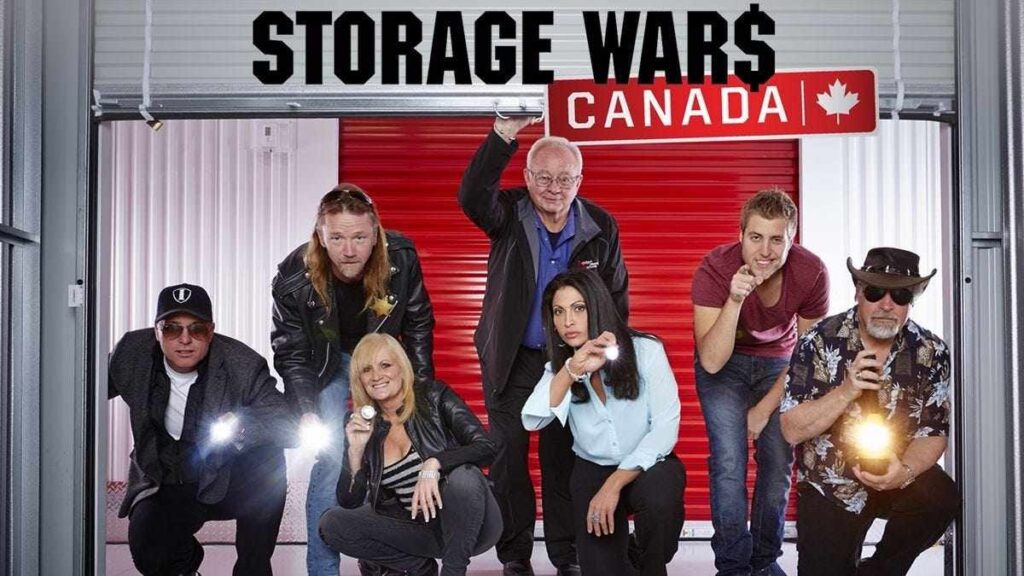Everything I know about podcasting I learned from reality TV*

Before joining Pacific Content I spent a decade working in the trenches of Reality TV. It was the kind of job that people either thought was intriguing or simply turned their noses up at. And even though there may have been a few shows along my journey that I may have turned my nose up at as well, for the most part, it was fascinating. It gave me an appreciation for structure that I don’t think I would have otherwise had. An appreciation I’ve found invaluable in my time developing and producing podcasts.
This certainly won’t come as a hot take, but the appeal of reality television as an entertainment commodity is that they’re relatively inexpensive to produce. They run for the same television hour as a marquee drama series but are made for a fraction of the cost. And when designed well, they have a formula that is highly predictable. Not predictable in terms of being able to guess what is going to happen next, but predictable to produce. You aren’t faced with the challenge of reinventing and having to discover a structure with every story you tell.
One of the shows I had the chance to produce was the Canadian version of the hit American series Storage Wars. If you haven’t seen Storage Wars, the basic premise is this: When people don’t pay their bills at a self-storage facility, their storage locker gets auctioned off. And the winner of the audition then gets to root through the mountain of stuff inside that locker, sometimes finding valuable or at least interesting things.

There’s a little more to it than that, but generally speaking what was the world that the producers of the original version of Storage Wars walked into. Their challenge was then to build a structure around that world that would not only be compelling and driven by stakes, but highly repeatable. And what they came up with was (in my humble opinion) genius. They turned the act of buying people’s old trash into a game show. They created a format where the same four teams travelled around trying to outbid each other on lockers. And the person with the highest profit on any given episode is declared the winner.
Before working on the Canadian version of Storage Wars I used to use the original version as bait to keep myself entertained on the treadmill at the gym. If I could time my workout properly with the beginning of the show, I knew that I’d be hooked and consequently forced to stay on the treadmill for the entire half-hour. The show’s structure was designed that way, making it almost impossible to turn off. You need to know what that thing inside that locker is actually worth. And that’s all because of the work of a genius format design.
Break it down
In my experience, there are two ways of looking at formats. The first refers to the genre. Game shows, Interview shows, True Crime, are all examples of format as a genre. But the formats that obsess my brain are formats as structure. Which when you break formats down with that in mind gives you the chance to truly peek behind the curtain to see how any given show really works.
The first thing I did before producing the Canadian version of Storage Wars was to break down the format of the original. It’s an exercise I’ve done with every single show I’ve produced in both television or podcasting.
To do that I watch a few episodes with a stopwatch and break down the exact timing of the episodes to see if I can learn anything about the show’s DNA.
When I first broke down the American version of Storage Wars I was left with a list that literally looked like this:
- 0:00 — Generic opening that explains the premise of the series
- 0:19 — “Coming up” — clips from the upcoming episode
- 0:37 — Main titles — Theme song plays and the characters are introduced
- 1:14 — Establishing shots of the area/town that the auction is taking place
- 1:17- Auctioneer drives to the auction. He introduces the location of where the auction is taking place.
- 1:30 — Team #1 drives to the auction. They set up what they’re looking for and what the stakes are for the auction
- 1:42 — Team #2 drives to the auction. They set up what they’re looking for and what the stakes are for the auction….
- Etc, etc, etc…
Map it
And once I broke down several episodes into second by second details I was then able to create a format map for the series. A map that showed the spine of how the show worked. I was now able to identify the 12 scenes that made up every episode and understood the mechanics of what each scene needed to accomplish. Eventually, I was left with a format map that looked like this:

So, what did I learn from that exercise? I learned how Storage Wars set up clear stakes and how those stakes get reinforced throughout any specific episode. And I learned exactly how stickiness — that thing that kept me running on the treadmill — gets built up over a half-hour episode. I then took that info and used it to help showrun the Canadian version of the show. And even though the version we produced had its own flavour and tone, it stuck to the original format and created a show that’s now been broadcast all over the world.
When I joined up with Pacific Content, the first show that landed on my plate was a series from McAfee called Hackable? Mcafee wanted a cyber security podcast that would take hacking scenes from TV and movies and test them in the real world to see how much of a threat they actually were. Early in the development process, the show was described as Mythbusters meets Mr Robot. Mr. Robot was there more for subject matter inspiration, but understanding Mythbusters would go on to be key to designing the Hackable? format.
If you haven’t seen Mythbusters, it’s a Discovery Channel show designed around taking myths or commonly held beliefs or rumours, and then through some pretty extreme hands-on experiments, “busting” them to see if they are true or not. It’s a super high octane show that is also a ton of fun. So we broke down a few episodes of Mythbusters so that we could gain an understanding of how their format worked to see what we could learn from it.
Plot it
This exercise proved invaluable when we went to plot out the format for Hackable? It gave us visibility into the secret sauce on how the Mythbusters format actually worked. The first thing we learned was the value of having things blow up. They tend to blow up stuff on Mythbusters, and even though we weren’t planning on literally blowing anything up with Hackable? we knew that if we could find our equivalent “blowing things up” moment, then that would be incredibly helpful. And they didn’t just blow things up, but they strategically teased that they were going to blow things up over and over again throughout the episode. These teases are key to their format. Often the excitement they create was higher than the actual moment of explosion and fascinating to plot out. The other takeaway was the value of having super clear goals for each challenge and each challenge having an incredibly clear wrap-up.
We then took the inspiration from the exercise we did for the Mythbusters format and applied it to the format design of Hackable? The show was hosted by a cyber security expert (Bruce Snell) and a total rube (me!) Like Mythbusters, each episode would have one challenge where I would find a hacker who would try and hack me in some way in order to answer a question about internet security (eg: “If I log onto the wifi at my local cafe am I actually putting myself at risk?”) Based on what we learned through breaking down the Mythbusters format we were able to design our own format template that had things metaphorically “blow up” (the potential danger of the hack) that we could constantly tease throughout the show. We also made sure that not only were the goals of each hack clear but that they were restated again and again throughout the episode to not only remind the listener that good stuff was coming but to help create some Mythbusters style tension and drama.

The format we came up with for Hackable? looked something like this:

The result was a format for a podcast that ran for five seasons and was downloaded millions of times. Something that was not only efficient to produce, but helped create a format that was able to ensure repeated storytelling success.
The big things I learned from getting to know formats:
- Take time to identify shows that you love and break them down on paper. It takes time to do, but I learn a ton each and every time I do it.
- Formats are rarely perfect right out of the gate. It may take you a couple of episodes until you are truly able to refine your format and that’s ok. Rome wasn’t built in a day. But it is always better to have a plan and change it than to launch into something without anything.
- Great formats are invisible to the audience but invaluable to a creator. If the audience is too aware of the format it can become boring. The audience should be so entertained by your content that they aren’t really even paying conscious attention to the format.
Break it
And once you know your format inside and out, my favourite thing to do next is to give myself permission to break that format once per episode. It can and probably should be a small deviation from your format map, but mixing things up certainly helps keep your format fresh and works as a subconscious surprise for the audience. I like to look for small breaks, maybe I’ll add in an additional scene, or rearrange two of the beats in the format map, or maybe end a scene earlier than usual. Any small thing that throws the audience ever so slightly off is a good thing. It helps keep things interesting for both the audience and the creator and helps add longevity to the format that you’ve worked so hard to create!
Sign up for the Pacific Content Newsletter: audio strategy, analysis, and insight in your inbox. Once a week.
